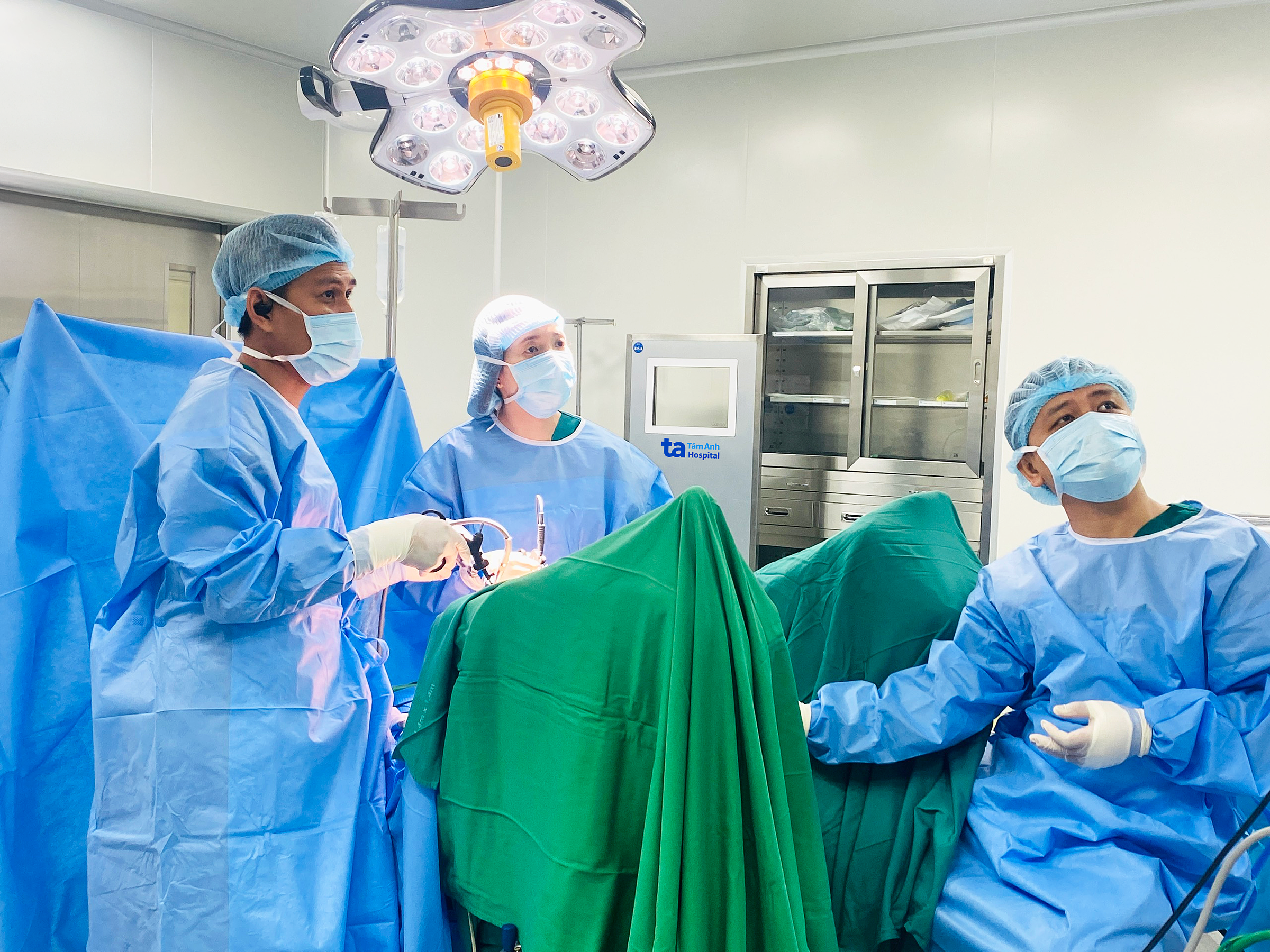Dr. Le Phuc Lien, head of the Urogynecology Unit at the Urology - Nephrology - Andrology Center of Tam Anh General Hospital in TP HCM, explained that Kieu's severe incontinence prevented her from benefiting from treatments like pelvic floor exercises, vaginal laser therapy, or vaginal pessaries. She also had a stage 2 bladder prolapse, which carried a high risk of worsening over time. Dr. Lien recommended a "two-in-one" laparoscopic surgery to address both the pelvic organ prolapse and the incontinence using a transobturator tape (TOT) procedure.
The surgical team made 4 small incisions in Kieu's abdomen to insert laparoscopic instruments and used a synthetic mesh to support the bladder. Dr. Lien then made a small incision in the anterior vaginal wall and inserted a TOT mesh through the obturator foramen in the pelvis, placing it under the urethra to provide support and correct the incontinence.
 |
Dr. Lien (center) and the surgical team performing the bladder prolapse and incontinence surgery on Kieu. Photo: Tam Anh General Hospital |
Dr. Lien (center) and the surgical team performing the bladder prolapse and incontinence surgery on Kieu. Photo: Tam Anh General Hospital
One day after the surgery, Kieu was recovering well, alert, and no longer experiencing incontinence when laughing, coughing, sneezing, or during strenuous activity. She was subsequently discharged. Dr. Lien noted that due to Kieu's post-menopausal status and thinned, inflamed vaginal mucosa, hormone replacement therapy would be beneficial to improve her condition and alleviate other genitourinary symptoms associated with menopause. She was also advised to continue pelvic floor (Kegel) exercises to prevent recurrence. During the first week post-surgery, Kieu needed to maintain good hygiene to prevent infection and avoid strenuous activity, heavy lifting, or spreading her legs for a month to prevent loosening the mesh.
Bladder prolapse occurs when a woman's bladder descends into the vagina, or in more severe cases, protrudes externally. According to statistics from the TP HCM Pelvic Floor Association, approximately 50% of women over 40 in Vietnam experience pelvic floor dysfunction with symptoms of incontinence, and about 40% of women over 50 experience pelvic floor dysfunction with symptoms such as uterine prolapse, bladder prolapse, or rectal prolapse.
Bladder prolapse is more common in women who have given birth, especially vaginally, which can overstretch the pelvic floor muscles. Other contributing factors include constipation, chronic cough, obesity, and hysterectomy. Menopause, with its associated decrease in estrogen, weakens pelvic muscles and ligaments, which can also contribute to prolapse.
Women experiencing symptoms of bladder prolapse or urinary incontinence should seek medical attention promptly to prevent the condition from worsening. Treatment options include Kegel exercises to strengthen pelvic floor muscles, vaginal pessaries, hormone therapy (estrogen), and surgical interventions such as laparoscopy or robot-assisted surgery if conservative treatments are ineffective.
Ha Thanh
*The patient's name has been changed.
| Readers can submit questions about kidney and urinary diseases here for doctors to answer. |












